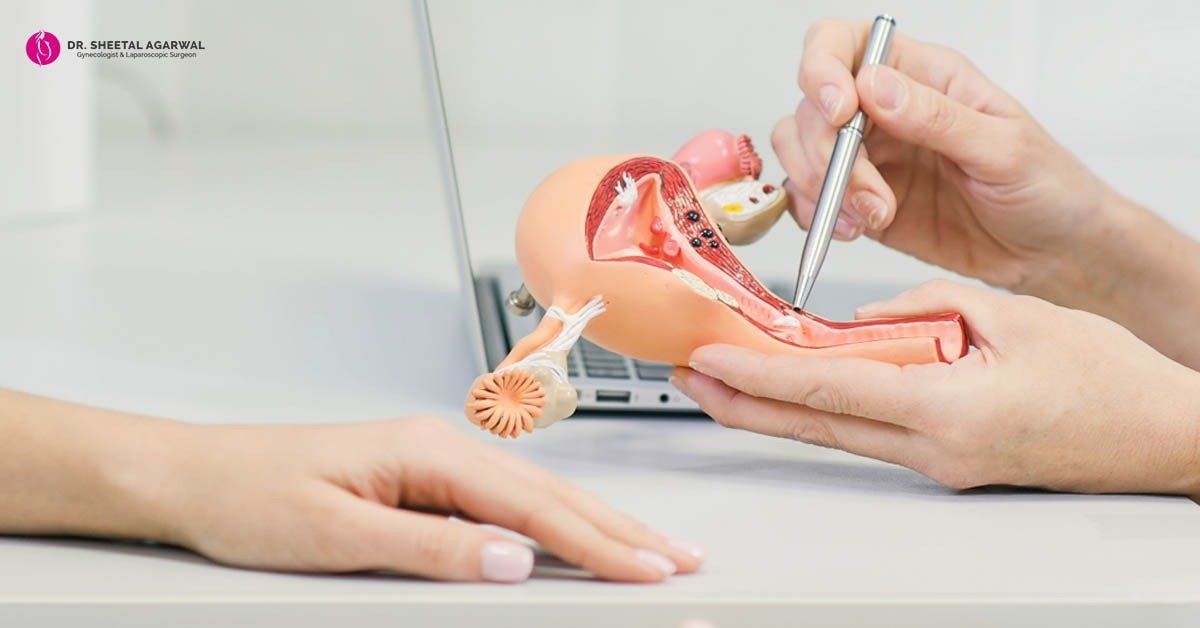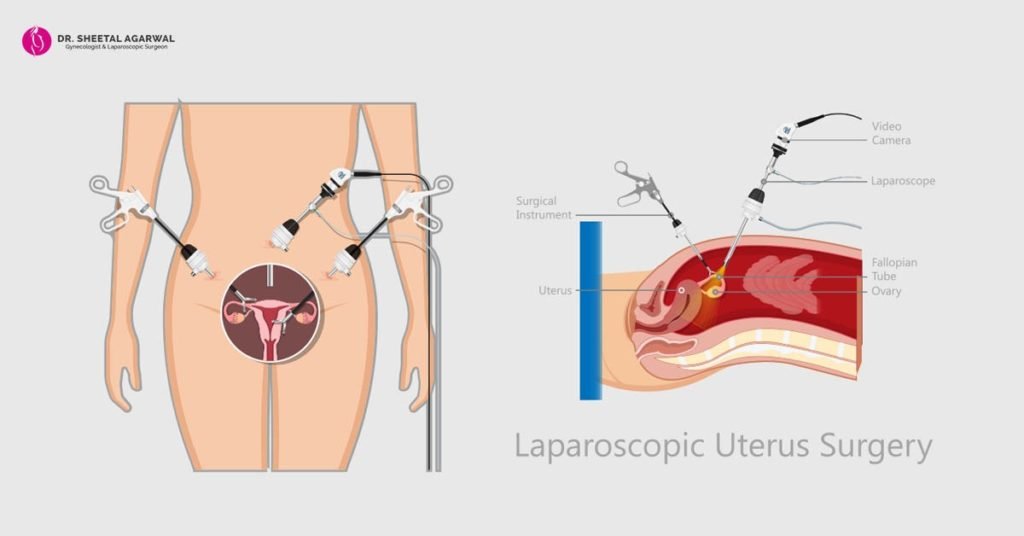Laparoscopy, often recognized as diagnostic laparoscopy, is a medical-surgical procedure. It helps in viewing and diagnosing internal organs. A low risk, invasive operation, laparoscopic surgery requires only minor incisions in comparison to open surgeries done for the same purpose.
Laparoscopy involves a device, known as laparoscope, to aim and have a proper look at the internal organs. A laparoscope is a long, thin tube. It has high intensity light and a front-facing high-resolution camera. Specialists insert the device into the region to be diagnosed via an incision. The camera transfers pictures onto a track monitor as it goes along. thus, helping the specialist in diagnosis. Throughout this treatment, the doctor may also get biopsy samples for evaluation.
Gynecologic Laparoscopic Surgery
To diagnose and solve the issues of the pelvic area in a women, doctors prefer to do a gynecologic laparoscopic surgery.
A lightweight and slender laparoscope lets the doctor see your body from the inside. This procedure will tell whether you have situations like fibroids or endometriosis. It could lead to an effective treatment too. Your doctor may conduct a wide range of surgeries using miniaturized instruments. The type of surgeries include:
- hysterectomy
- surgical contraception i.e. tubal ligation
- removal of ovarian cyst
Various reasons to perform the gynecological laparoscopic surgery
Laparoscopy may be used to diagnose, perform treatments or both. Often, a diagnostic procedure is enough.
Few reasons for the diagnostic surgery are:
- any history about the pelvic infection
- infertility
- pelvic pain
Various conditions diagnosed with laparoscopy include:
- reproductive cancers
- pelvic inflammatory disease
- infertility
- any painful scar tissue
- pelvic adhesions
- any pelvic pus
- ectopic pregnancy
- ovarian tumor
- ovarian cysts
- endometriosis
- fibroids in the uterus
Preparation for the gynecological laparoscopy
The type of surgery depends on how you prepare. You may need imaging tests or your doctor may make you undergo an Enema. (Enema is a procedure used for bowel cleansing by injecting liquid inside the body through the rectum.)
You should let your doctor know about the medicines that you consume before the laparoscopic surgery begins. This covers over-the-counter medications and supplements as well. Ensuring this is important because some medications may not be compatible with the operation and may cause complications.
Also, experts don’t recommend driving yourself right after the surgery. So it would be better to ask any of your friends or partner to be with you after the operation to drive. If they can’t, arrange a car service to drive you home.
Laparoscopic surgery is different for everyone. Your experience will depend on your conditions and expectations. Other factors like the severity of the procedure, the duration of the operation, the surgeon, the hospital, the nursing staff, how we respond to pain, etc. must also be noted.
It also varies from person to person when it comes to recovery. Medical professionals inform that recovery from laparoscopic surgery takes only a few days. Yet, most of us find that true healing takes a lot longer, usually many weeks more.

Recovery from the Laparoscopic surgery
Once the operation is over, the nurses will monitor your vital signs. You must remain in recovery until the anesthesia starts to wear off. Make a friend or family member stay close by over this time. For the early few days, you might want to put this person in charge of handling your medicines. You may need somebody to cook your meals for a short time too.
The doctor will give you advice on how to treat possible side-effects before you leave home. She may prescribe an antibiotic or pain medication to prevent infection.
Note that masturbation, bathing in the pool, driving, douching, and swimming are all prohibited for the first two weeks after the procedure. Also, don’t expect the first few days to be too much of yourself. You’re likely going to feel very tired and will need plenty of naps. But be sure to get up and move about as you can. Walking is a form of exercise that will help you heal faster.
Your first menstruation after the surgery
The first menstrual phase experiences vary significantly. Do not worry, if your period turns out more painful, longer, or heavier than usual. Internal healing takes a lot more time than outward cure. So your first couple of periods may be more painful. Yet, if you are worried about the degree of pain or if the illness is severe, contact your doctor. An experienced specialist like Dr. Sheetal Agarwal would love to help you with that.
Risks/ Complications after your Laparoscopic surgery
Bleeding, infection, and harm to organs in the region operated are the most common risks. Also, it is important to be watching for any signs of infection after your procedure. You must consult your doctor if you experience anything like lightheadedness, inability to urinate, nausea, vomiting, continuous coughing or shortness of breath. Bleeding, swelling, and redness at the incision site along with fever are also side effects you should look out for.
The organs being examined during laparoscopy are at a higher risk of damage. If an organ is perforated, blood and other fluids can leak into your body. In such a case, you’ll need further surgery to repair the damage.
Although, serious laparoscopic complications are uncommon, you might have to face:
- Severe abdominal pain,
- Long lasting nausea, and vomiting
- High fever
- Pus or major bleeding at the site of your incision
- Pain during bowel movements or urination
If you experience any of the above symptoms, consider contacting a suitable laparoscopic surgeon. For this, visiting Dr. Sheetal Agarwal, a renowned Laparoscopic Surgeon in Delhi for consultation would be the best medical decision you can take.
Have queries? Drop them in the comments below or better still, give us a call and get all your questions answered.


